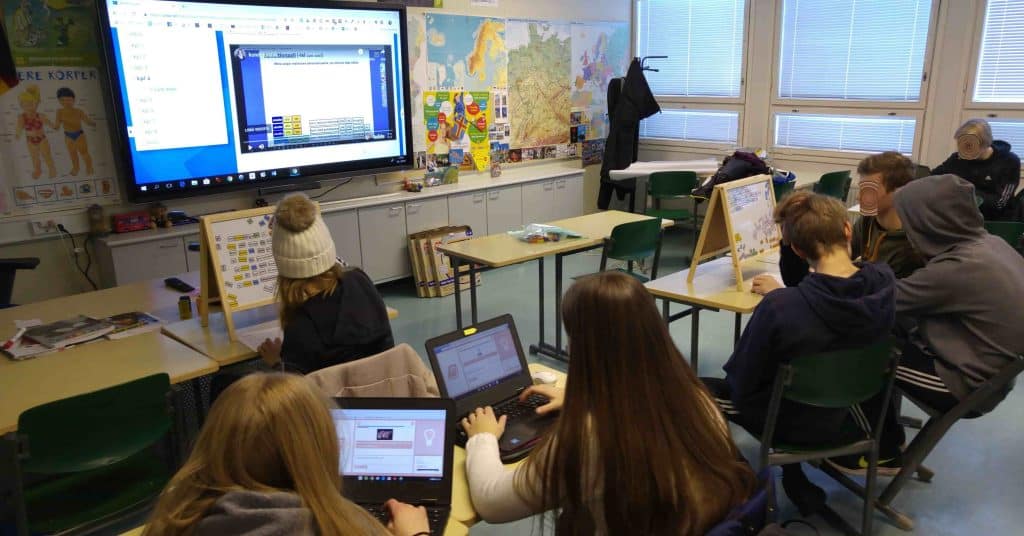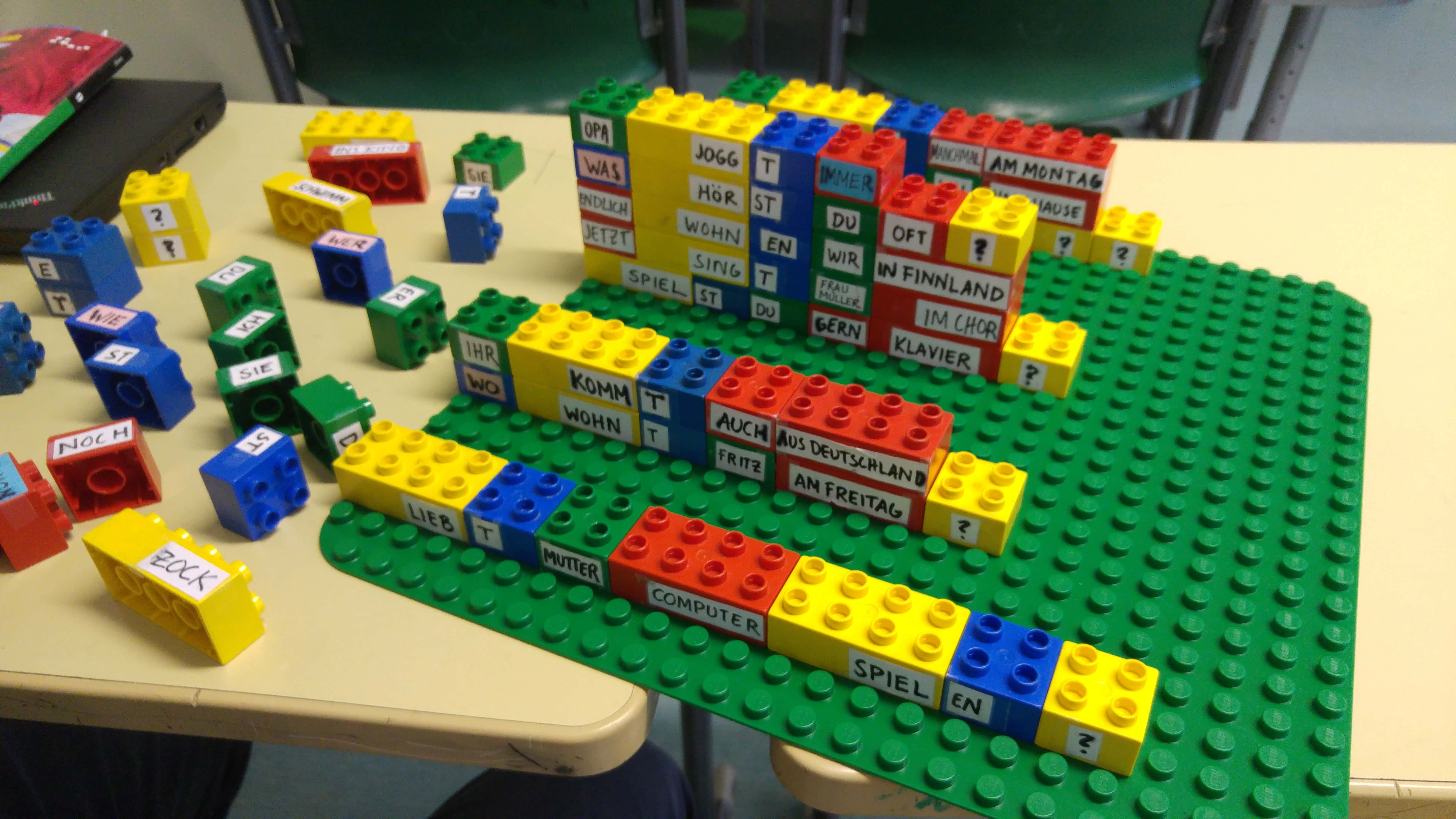Our previous blog posts have demonstrated how Sanako has built our language teaching technology business on globally-renowned Finnish learning models. Finland’s approach to language teaching is similarly innovative and offers some invaluable insights for language teachers globally. This blog post looks at how Finland promotes language teaching and learning nationwide and shares some inspirational examples of classroom best practice from one of the country’s leading language teachers.
Most importantly, the Finnish education system places a high priority on language teaching, starting young by integrating language learning into early years education. It also aims to provide pupils with a wide language repertoire, and to create a welcoming and encouraging attitude towards learning languages.
National language learning curriculum
Finnish basic education includes four different language routes beyond each learner’s mother tongue – two of which are compulsory and two optional. The A1 syllabus is mandatory, usually begins in the 3rd grade (9 to 10 years), and the language of choice is usually English. (From January 2021, students will begin studying English from Grade 1). The A2 syllabus includes an optional language, usually Spanish, German or Russian and begins in grades 3–6 (9 to 13 years).
The B1 syllabus is the other mandatory language course. It begins in the 6th grade (12 to 13 years of age) and usually focuses on the second national language, i.e. Swedish or Finnish. B2 is an optional foreign language such as Spanish, German, Russian or French. This begins in grades 8 (14-15 years) and is delivered according to available teacher expertise.
A core National Curriculum is in place for all language teaching. This must be followed, but municipalities retain the ability to tailor learning content and the languages studied to local requirements. Where necessary, teachers with particular language specialisms may be required to teach a class of students from different schools to meet demand.
Finnish language teaching and learning will receive a further boost with the introduction of the new lukio curriculum. This will see language teaching being embedded into different subject areas. Teachers are positive about the benefits of helping to foster cross-curriculum between colleagues and raising the importance of language learning in a whole-school context.
Beyond formal education, the Finnish authorities also recognise the value of children learning different languages (other than Finnish or Swedish) to native-speaker standard. Funding has, for example, been made available to give children of immigrant or mixed linguistic background extra lessons in other languages they may speak at home. More than 50 languages have been taught through the scheme. Russian, Arabic, English, Estonian, Chinese and Spanish are widely studied, as well as the languages of significant immigrant communities including Albanian, Somali and Vietnamese.
Best practices from foreign language teaching
So given this broad context, how are language educators actually delivering high-quality language teaching in Finnish classrooms? We spoke to Heini Syyrilä to find out more – she teaches German and Swedish at primary, secondary and upper secondary school in Finland and was named National Language Teacher of the Year in 2017.
(Heini was a keynote speaker in one of our webinars: “How can combining pedagogy and technology transform language teaching?” – Click here to see the full webinar recording)
According to Heini, the vast majority of language teaching in Finland is delivered via textbooks or their digital equivalents. Although the Covid-19 pandemic has forced “teachers to learn to deliver their teaching digitally”*, Heini notes from her experience of teacher training that “there’s still lots more to understand given the number of digital language teaching resources available.” She therefore stresses that teachers should build a detailed knowledge of these materials, so that they can choose the most pedagogically relevant tool in every situation.
*Read also our blog about How Covid19 changed language teaching in America’s schools to find out more perspectives and experiences on how to adapt to the “new normal” of teaching languages online and in a hybrid model.
In particular, Heini continues, many of these digital resources reflect a traditional, national focus on written exercises and their predominance in language assessment. Teachers should also carefully consider which resources are best suited to support teaching of the latest (2016) curriculum, which shifts the focus more towards oral and communicative language skills. It’s important, she stresses, for teachers to respond to this change by using “a variety of different exercises and tools to show what students really know and understand.”
Heini has therefore developed her own “digital-tactile pedagogy” based on the National Curriculum and on her own, extensive experience of teaching and training. It acknowledges that all learners are different and enables her students “to learn a language whatever their level of ability.” Heini teaches common concepts through textbooks or by using either digital or tactile exercises. Students are able (and motivated) to use the resources that best suit their learning style, helping them to “learn and advance at their own pace.” Students are also able to demonstrate their understanding through a variety of assessment methods.
The pictures below provide examples of Syyrilä’s digital-tactile approach to language teaching. They highlight different ways for students to learn word order in German through tactile exercises, digital exercises using Sanako’s digital language teaching solution, and emphasise how both combine to enforce the pedagogical plan. Communicating and working in pairs and groups are also essential in her classroom.
This tactile exercise uses Lego bricks to teach the principles of word order in German. Students work in pairs by forming the sentences which they also say aloud and translate into Finnish.
How educational software supports language teachers?
Digital language teaching and learning tools are particularly important elements of this digital-tactile approach. For Heini, such tools provide invaluable help and support for students throughout their learning journeys, enabling them to get both written and spoken feedback. As she says: “it’s like having a teacher next to them all of the time” – this has the added advantage of enabling her to spend more time with those students who need extra support.
Modern language teaching solutions also support Heini’s language teaching when her students are at home, either when doing homework or as part of Covid-19 pandemic teaching provision. The benefits for teachers are, in her opinion, clear: “I know what the students have done, I know what marks they got and I know what approaches they used. It’s very informative for me as a teacher.”
Providing training for language teachers is as important as the new digital language teaching solutions
Heini hopes that such clear benefits will help convert more and more language teachers to integrate digital tools into their language teaching. But she fears that many will simply “return to their old habits and favourite resources” unless publishers can create digital resources that are more than just online textbooks. Unfortunately, this puts the teacher at odds with their students who, Heini believes, are far more positive about online learning post-Corona. Her research shows increased student enthusiasm for online learning, particularly as it enables them to focus on their teachers / their learning without being distracted by their classmates’ poor behaviour.
Yet driving a sustained shift to digital language teaching in the long term will involve a series of fundamental changes, Syyrilä argues. For starters, schools will require additional budget so they can buy the right online learning resources. Such solutions should also follow Sanako’s approach – providing all necessary tools for language teachers in one simple platform, saving them time and fully supporting them in and out of the classroom. And to ensure that teachers get the most out of the digital tools, a comprehensive training programme is needed to support teachers’ use of the technology and to help them develop their own pedagogical approach. If those approaches are as innovative and inspiring as Heini’s, then our language learners will be brilliantly equipped to flourish in the multilingual society of the future.
Are you interested to learn more about Sanako’s language teaching software and see what features and benefits it offers for language teachers? Book a FREE remote demo and see our language teaching platform in action.
Book free demo
